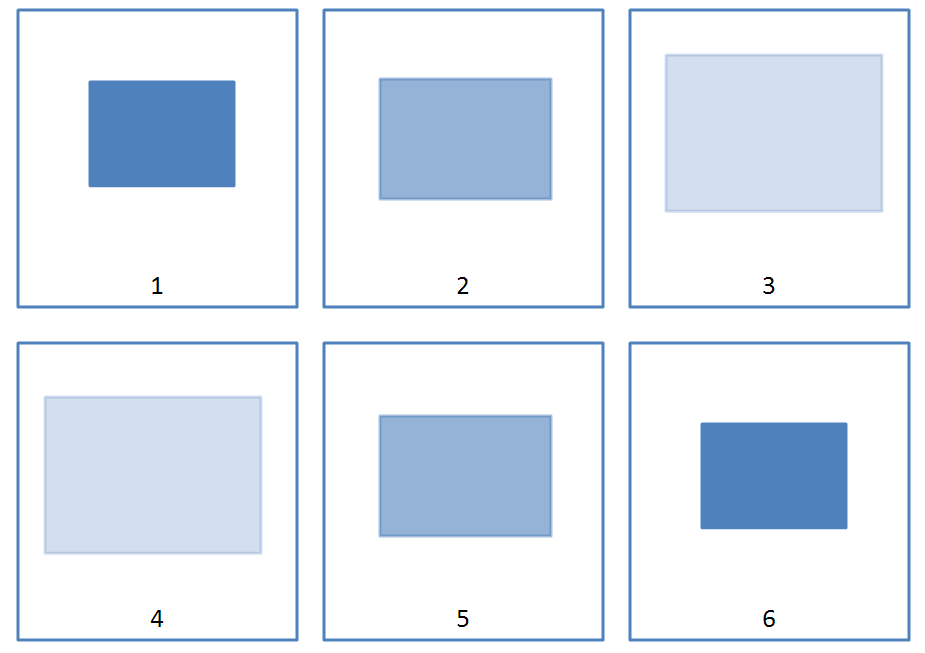L.3.4.5 Animation Behaviors
All animation consists of the following basic animation behaviors:
Animate
The animate behavior introduces a generic attribute animation that requires no semantic understanding of the attribute being animated. It can animate numbers.
Animate Color
This behavior animates the color of a particular element.
Animate Effect
Animate Motion
Animate Rotation
Animate Scale
This behavior provides the ability to do image transform/filter effects on elements.
Animate motion provides an abstracted way to move positioned elements. It provides the ability to specify from/to/by type motion as well as to use more detailed path descriptions for motion over polylines or bezier curves.
This behavior allows rotation of an element.
Allows animation of the width and/or height of an element over time.
A time node can combine multiple animations for a range of effects. For example, the “flash bulb” animation which scales a shape larger while at the same time having it fade uses two animation behavior elements. An example is shown below:

The representation for this animation effect in the time node element appears like:
<p:par>
<p:cTn id="5">
<p:stCondLst>….
<p:childTnLst>
<p:animEffect transition="out" filter="fade"> …
<p:animScale>
<p:cBhvr>
<p:cTn id="7" dur="500" autoRev="1" fill="hold"/>
<p:tgtEl>
<p:spTgt spid="9"/>
</p:tgtEl>
</p:cBhvr>
<p:by x="105000" y="105000"/>
</p:animScale>
</p:childTnLst>
</p:cTn>
</p:par>In this time node, we have two animation effects. One is creating a “fade” effect on the shape using the animEffect element and the other is creating a “scale” effect using the animScale element. All animation behaviors have a cBhvr and cTn element, which stores properties for the animation. For example, we can give the animation behaviors an ID and attributes that set the duration of the animation. The spTgt specifies the target shape to which this animation effect is applied.